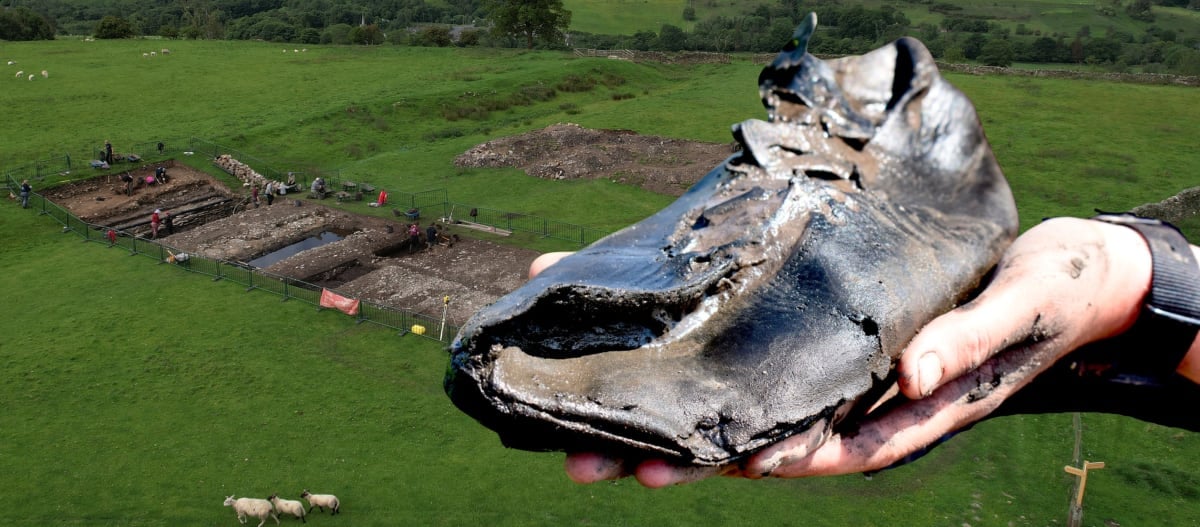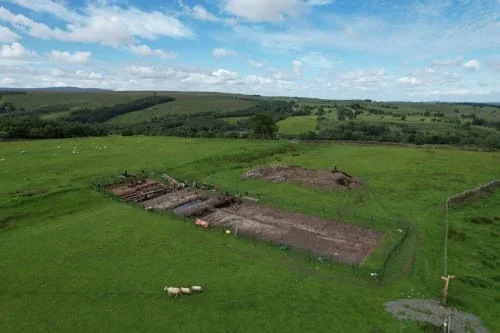Archaeologists have been left baffled after unearthing “unusually large” 2,000-year-old Roman shoes in Northumberland.
Eight shoes at least 30cm (11.8in) long – the equivalent of a UK size 13 to 14 – were discovered at Magna Roman Fort earlier this year.
Archaeologist Rachel Frame said the leather shoes had all been found in a defensive ditch, which the Romans also used as rubbish dumps.
“We have to assume it's something to do with the people living here, having bigger feet, being potentially taller, but we don't know,” she told the BBC.
“Are the people living there from a specific region? Could that be why their shoes are so much larger? But at the moment, it's sort of, well – this is unusual.”

Due to low oxygen conditions in the soil at the sites, the leather shoes have been preserved for centuries, according to Dr Frame.
Dr Elizabeth Greene, associate professor at the University of Western Ontario and Vindolanda’s shoe specialist, has seen and measured every shoe found at the site.
She said: “I think there is something very different going on here at Magna. Even from this small sample uncovered, it is clear that these shoes are much larger on average than most.”
Last year, a section of one of Britain’s most important Roman roads was unearthed in south-east London in a “remarkable” archaeological discovery.
The 2,000-year-old road, known as Watling Street, ran from the Roman port at Dover through London to the West Midlands.

The 276-mile route was built shortly after the Roman invasion of Britain in AD 43 and was used by visiting emperors, including Hadrian in AD 122 when he ordered the building of his wall separating England and Scotland.
Archaeologist Gillian King said the discovery had redrawn the Roman road map in the capital. She added: “It is a key finding for archaeological research for London.”
The section of road revealed lies to the south of the junction of Old Kent Road and Ilderton Road and was well-preserved, measuring about 19ft (5.8m) wide by almost 5ft (1.4m) high.
Southwark Council said distinct layers can be seen, and that the road shows a solid foundation of compacted gravel that was sealed with two layers of chalk before being topped with another layer of compacted sand and gravel.
It added that the original surface of the road would probably have been made from the same material and would have sat at a similar level to the modern road, but that over time this had been lost.
The London portion of Watling Street was rediscovered during Christopher Wren’s rebuilding of St Mary-le-Bow in 1671 to 1673, following the Great Fire of London in 1666.
Archaeologists perplexed to find ‘very large’ Roman leather shoes at ancient fort
Businesses ‘thriving’ after adopting four-day working week
Researchers reveal what Ancient Rome smelled like – and it’s disgusting
Thunderstorm weather warning issued by Met Office as heatwave finally ends
Secrets of ancient societies revealed through DNA from 4,000-year-old teeth
Dentist cracks centuries-old puzzle hidden in famous Da Vinci drawing







